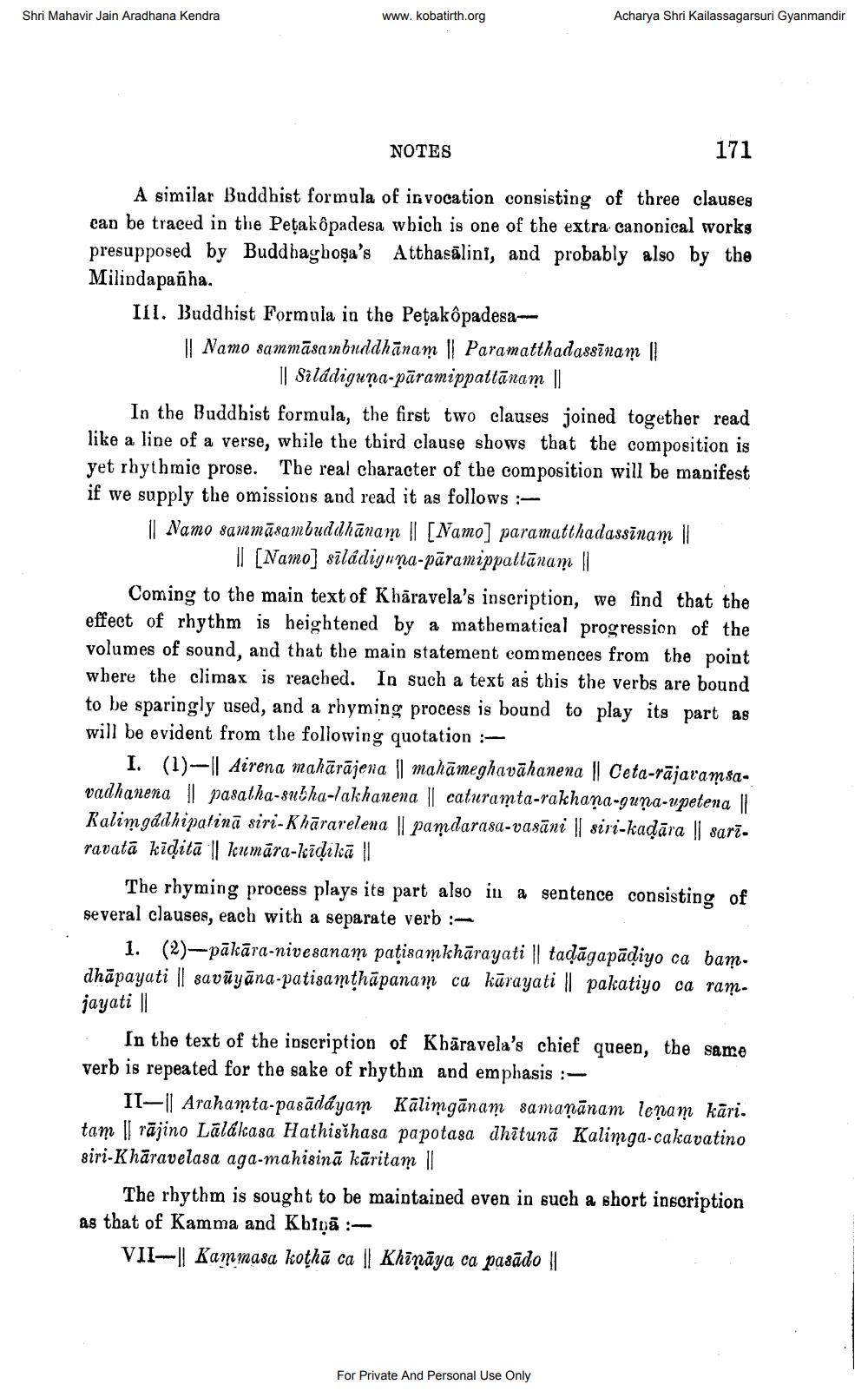________________
Shri Mahavir Jain Aradhana Kendra
www.kobatirth.org
NOTES
171
A similar Buddhist formula of invocation consisting of three clauses can be traced in the Petakôpadesa which is one of the extra canonical works presupposed by Buddhaghosa's Atthasalini, and probably also by the Milindapanha.
III. Buddhist Formula in the Peṭakôpadesa
Acharya Shri Kailassagarsuri Gyanmandir
Namo sammāsambuddhanam || Paramatthadassinam || || Siladiguna-paramippattānam ||
In the Buddhist formula, the first two clauses joined together read like a line of a verse, while the third clause shows that the composition is yet rhythmic prose. The real character of the composition will be manifest if we supply the omissions and read it as follows:
Namo sammasambuddhanam || [Namo] paramatthadassinam || || [Namo] siladigna-paramippattanam |
Coming to the main text of Kharavela's inscription, we find that the effect of rhythm is heightened by a mathematical progression of the volumes of sound, and that the main statement commences from the point where the climax is reached. In such a text as this the verbs are bound to be sparingly used, and a rhyming process is bound to play its part as will be evident from the following quotation :
I. (1)|| Airena mahārājena || mahāmeghavahanena || Ceta-rajavamsavadhanena pasatha-subha-lakhanena || caturamta-rakhana-guna-upetena || Kalimgddhipatina siri-Khararelena || pamdarasa-vasāni || siri-kaḍāra || sarī. ravata kiḍita kumāra-kiḍikā ||
The rhyming process plays its part also in a sentence consisting of several clauses, each with a separate verb :
1. (2)-pākāra-nivesanam patisamkharayati || tadagapadiyo ca bamdhāpayati || savāyāna-patisamṭhāpanam ca kārayati || pakatiyo ca ramjayati ||
In the text of the inscription of Kharavela's chief queen, the same verb is repeated for the sake of rhythm and emphasis :
II- Arahamta-pasadayam Kalimganam samaṇānam leņam kāri. tamrajino Lalákasa Hathisihasa papotasa dhituna Kalimga-cakavatino siri-Kharavelasa aga-mahisinā kāritam ||
The rhythm is sought to be maintained even in such a short inscription as that of Kamma and Khina :
VII- Kammasa kotha ca | Khīņāya ca pasado ||
For Private And Personal Use Only




